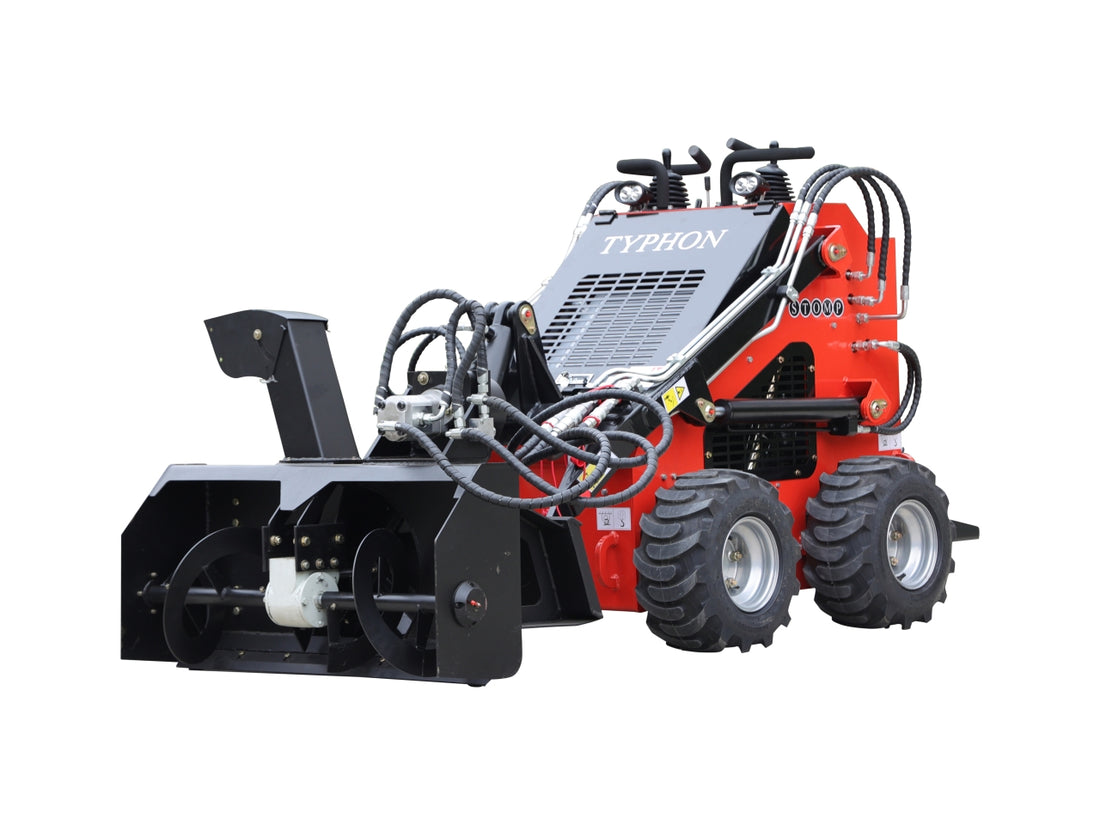Comprehensive Guidance for the Operation and Maintenance of Skid Steer Loaders
Introduction:
Skid steer loaders are versatile and indispensable machines in various industries, from construction to agriculture. To fully harness their potential and ensure safety, efficiency, and longevity, it's imperative to adhere to best practices in their operation and maintenance. This comprehensive guide provides insights into proper operation techniques, maintenance protocols, troubleshooting strategies, and resources for skid steer operators.
Skid Steer Operation Best Practices:
Effective operation of skid steer loaders involves more than just driving the machine. It requires a thorough understanding of safety protocols and ergonomic considerations to protect both operators and bystanders. Key best practices include:
Conducting pre-operational checks: Before starting work, operators should inspect the machine for any visible damages, leaks, or malfunctions. Ensure that all controls, safety features, and attachments are in proper working condition.
Adhering to safety protocols: Operators must wear appropriate personal protective equipment (PPE) such as helmets, gloves, and safety boots. They should also follow safety guidelines related to load capacity, stability, and operating on slopes.
Practicing smooth and controlled operation: Operating a skid steer requires precision and finesse. Operators should avoid sudden movements or jerky actions that could destabilize the machine or pose risks to nearby personnel.
Maintaining clear visibility: Proper positioning of mirrors and regular cleaning of windows are essential to ensure optimal visibility, especially when maneuvering in tight spaces or around obstacles.
Routine Maintenance Guidelines:
Regular maintenance is critical for maximizing the performance and longevity of skid steer loaders. Following a comprehensive maintenance schedule helps prevent breakdowns, reduce downtime, and extend the lifespan of the machine. Key maintenance tasks include:
Checking fluid levels: Regularly inspect and replenish engine oil, hydraulic fluid, coolant, and other essential fluids according to manufacturer recommendations.
Greasing moving parts: Lubricate pivot points, joints, and other moving components to reduce friction and wear. Pay special attention to the loader arms, bucket linkage, and wheel hubs.
Inspecting tires and tracks: Monitor tire pressure and tread wear regularly. Replace worn-out tires or damaged tracks promptly to ensure optimal traction and stability.
Cleaning air filters: Dirty or clogged air filters can impede engine performance and increase fuel consumption. Clean or replace air filters as needed to maintain proper airflow.
Checking electrical system: Inspect wiring, connectors, and battery terminals for signs of damage or corrosion. Ensure that lights, gauges, and safety features are functioning correctly.
Troubleshooting Common Issues:
Despite diligent maintenance, skid steer loaders may encounter occasional problems or malfunctions. Knowing how to identify and troubleshoot common issues can help minimize downtime and prevent costly repairs. Some common issues and troubleshooting tips include:
Hydraulic system leaks: Inspect hydraulic hoses, fittings, and seals for leaks or damage. Tighten loose connections and replace worn-out components as needed.
Engine overheating: Check coolant levels and inspect the radiator for obstructions. Clean debris and ensure proper airflow around the engine compartment. Consider upgrading to a higher-capacity radiator if overheating persists.
Electrical problems: Test the battery voltage and inspect fuses and relays for signs of damage. Check for loose connections or faulty wiring and repair or replace components as necessary.
Poor performance or erratic operation: Conduct a thorough inspection of the fuel system, including filters, injectors, and fuel lines. Clean or replace clogged filters and ensure proper fuel quality and delivery.
Training Resources and Certification Programs:
Proper training is essential for skid steer operators to operate the equipment safely and efficiently. Many organizations offer training courses and certification programs specifically designed for skid steer operation. These programs cover a range of topics, including equipment operation, safety protocols, maintenance procedures, and regulatory compliance. Operators should seek out accredited training providers and regularly update their skills to stay abreast of industry best practices and technological advancements.
Conclusion:
Maximizing the efficiency of skid steer loaders requires a multifaceted approach that encompasses proper operation techniques, routine maintenance, troubleshooting skills, and ongoing training. By adhering to best practices outlined in this guide and staying proactive in maintenance and training efforts, operators can ensure the optimal performance, longevity, and safety of skid steer loaders in various work environments.

